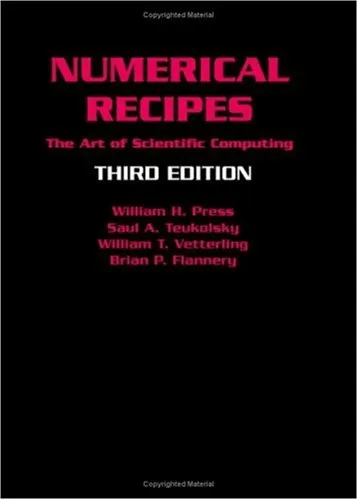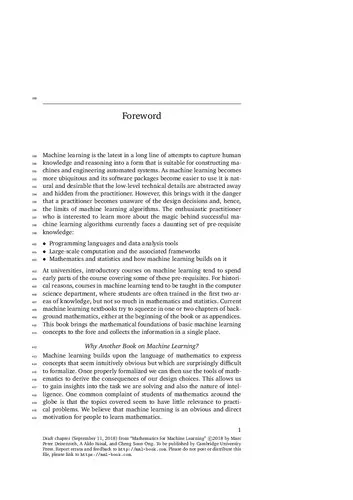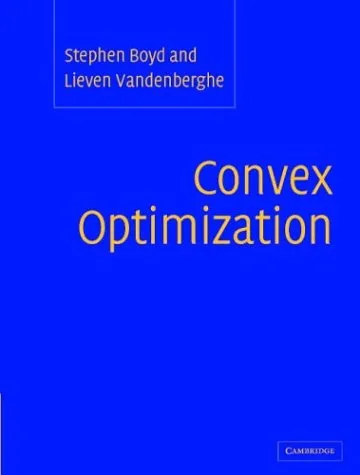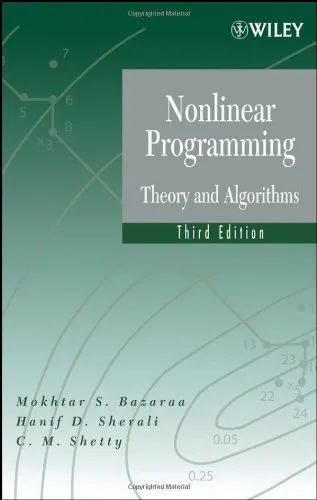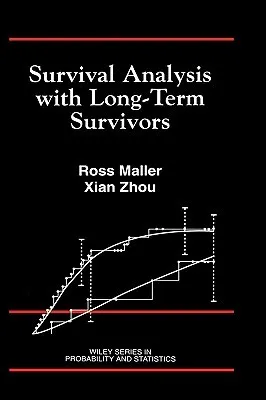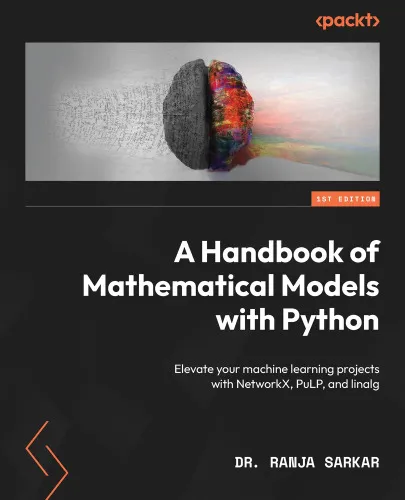Mathematical Programming
4.5
Reviews from our users

You Can Ask your questions from this book's AI after Login
Each download or ask from book AI costs 2 points. To earn more free points, please visit the Points Guide Page and complete some valuable actions.Related Refrences:
Analytical Summary
The book Mathematical Programmingpp.229—261, authored by E. Alper Yıldırım and Michael Todd, delves into the intricate principles that govern mathematical optimization. This section of the text is a specialized focus within the broader realm of mathematical programming, offering readers a concentrated examination of advanced methods, theoretical underpinnings, and practical methodologies applied in real-world decision-making scenarios.
Covering pages 229 to 261, this portion is a self-contained exploration aimed at graduate-level students, researchers, and industry professionals who need more than a cursory understanding of optimization. It spans complex topics that include both linear and nonlinear programming concepts, the role of constraints in model building, and approaches to achieving optimal solutions under resource limitations.
Information about the exact publication year is unavailable due to no reliable public source explicitly confirming it. Nevertheless, the authors’ scholarly recognition in mathematical optimization provides confidence in the authority of the content. The analytical nature of this segment bridges theoretical frameworks with computational strategies, enhancing the reader’s skill in structuring and solving complex programming problems.
Key Takeaways
From this focused segment of the book, readers will gain insight into optimization theory’s practical applications and build a robust capacity for problem formulation and resolution.
One key takeaway is understanding the relationship between objective functions and constraints, and how they affect feasible regions in both linear and nonlinear contexts.
Another is recognizing the computational implications of different algorithmic approaches, preparing the reader to select appropriate methods for large-scale or data-intensive scenarios.
You will also appreciate the rigorous logical processes that underpin model validation, sensitivity analysis, and resource allocation strategies across various professional fields.
Memorable Quotes
Optimization is not merely a mathematical pursuit; it is the art of making the best possible choice under given circumstances. Unknown
Every constraint tells a story about the real-world limitations that shape our models. Unknown
Mathematical programming reveals the elegant balance between theory and application. Unknown
Why This Book Matters
Mathematical Programmingpp.229—261 is essential for anyone seeking an in-depth understanding of complex optimization processes. It transcends a simple academic treatment, functioning as a bridge between abstract theory and tangible solutions.
For academics, it provides rigorous proofs and structured methodologies that align with established optimization models. For professionals, it offers insight into practical adaptation, ensuring decisions are mathematically sound and contextually relevant.
Given its focused scope, this segment delivers depth without overwhelming breadth, allowing readers to master specific techniques that can be integrated into diverse problem-solving environments. Secondary keywords such as “optimization techniques” and “linear and nonlinear programming” are not only thematic anchors but direct indicators of the book’s value proposition.
Inspiring Conclusion
In conclusion, Mathematical Programmingpp.229—261 stands out as a concentrated source of intellectual rigor and practical relevance for anyone interested in the precise art of optimization.
By engaging with these pages, academics and professionals alike can deepen their mastery of complex mathematical constructs, while refining the ability to translate them into actionable strategies. The discussions on optimization techniques and linear and nonlinear programming will resonate with readers who aim to elevate their expertise.
Your next step is simple yet profound: read, share, and discuss the insights from this segment with peers and colleagues, ensuring that the knowledge within Mathematical Programmingpp.229—261 becomes part of a vibrant, ongoing conversation about the future of decision-making and computational mathematics.
Free Direct Download
You Can Download this book after Login
Accessing books through legal platforms and public libraries not only supports the rights of authors and publishers but also contributes to the sustainability of reading culture. Before downloading, please take a moment to consider these options.
Find this book on other platforms:
WorldCat helps you find books in libraries worldwide.
See ratings, reviews, and discussions on Goodreads.
Find and buy rare or used books on AbeBooks.
1001
بازدید4.5
امتیاز0
نظر98%
رضایتReviews:
4.5
Based on 0 users review
Questions & Answers
Ask questions about this book or help others by answering
No questions yet. Be the first to ask!

